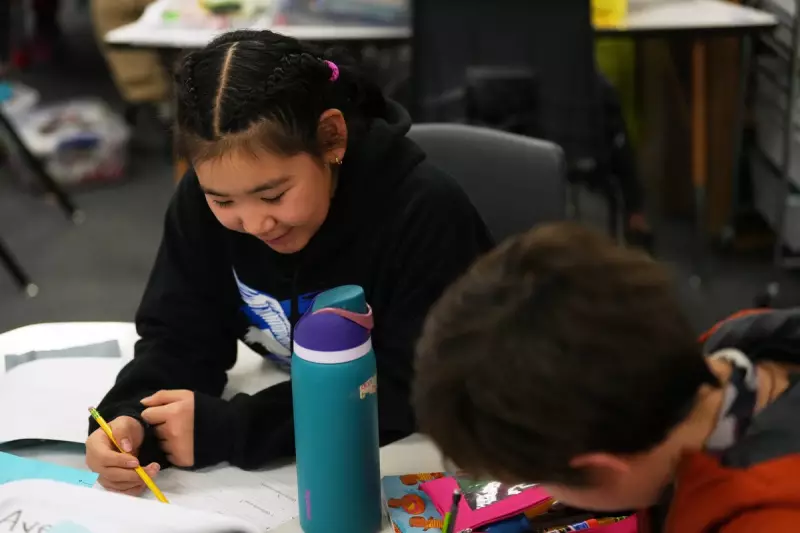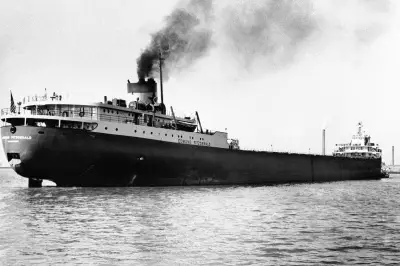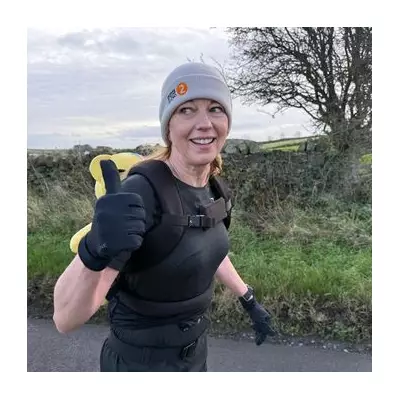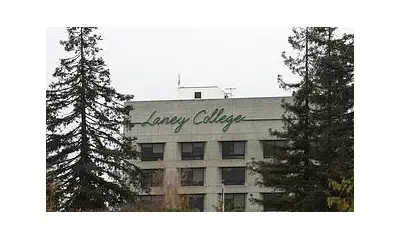
In the aftermath of catastrophic flooding that devastated remote Alaskan villages, an unusual educational programme has become a lifeline for displaced children. The Yup'ik language immersion scheme, one of only two such programmes in the state, is providing crucial cultural continuity and familiarity for young evacuees grappling with profound displacement.
Cultural Sanctuary Amid Crisis
The programme gained new significance after last month's severe flooding triggered by the remnants of Typhoon Halong. The disaster inundated small coastal communities along the Bering Sea, displacing hundreds of residents and destroying or severely damaging nearly 700 homes. One person died and two remain missing following the catastrophic event that saw dozens of homes swept away, some with people still inside.
Among those affected was ten-year-old Rayann Martin, who now participates in the immersion programme hundreds of miles from her devastated village. When her teacher recently asked students their age, Martin held up ten fingers before the class responded in unison with the Yup'ik word for ten: "Qula!"
"I'm learning more Yup'ik," Martin explained, noting she now uses the language to communicate with her mother, teachers and classmates. "I usually speak more Yup'ik in villages, but mostly more English in cities."
Programme Expansion Meets Critical Need
The Anchorage School District, where more than 100 languages are spoken in students' homes, established the K-12 Yup'ik immersion programme approximately nine years ago following persistent parental requests and federal grant funding. Yup'ik, spoken by roughly 10,000 people across Alaska, ranks as the district's fifth most common language.
Before adding Yup'ik, the district had already implemented immersion programmes in Japanese, Spanish, Mandarin Chinese, German, French and Russian. The first Yup'ik immersion cohort are now eighth-graders, with the programme based at College Gate Elementary and Wendler Middle School.
Since the flooding, 170 evacuated children have enrolled in the Anchorage School District, with 71 joining the Yup'ik immersion programme. Brandon Locke, the district's world language director, described the previously smallest immersion programme as now "booming."
Principal's Personal Connection Drives Outreach
College Gate Elementary principal Darrell Berntsen, who is Sugpiaq Alaska Native from Kodiak Island, understands the evacuees' experience through family history. His mother was twelve during the 1964 magnitude-9.2 Great Alaska Earthquake and subsequent tsunami that destroyed her Old Harbour village.
"The greatest time of my life was being able to go out duck hunting, go out deer hunting," Berntsen recalled of his subsistence upbringing. His personal connection to cultural preservation extends further: his ex-wife's grandmother, Marie Smith Jones, was the last fluent speaker of the Eyak language before her death in 2008.
As flooding evacuees arrived in Anchorage, Berntsen greeted them at the Red Cross shelter and invited families to enrol children in the immersion programme. Many parents showed him photographs of their lost winter food stores—duck, goose, moose, seal and other traditional subsistence foods washed away or spoiled.
"Listening is a big part of our culture—hearing their stories, letting them know that, 'Hey, I live here in Anchorage, I'm running one of my schools, the Yup'ik immersion programme, you guys are welcome at our school,'" Berntsen said. "Do everything we can to make them feel comfortable in the most uncomfortable situation that they've ever been through."
Bridging Generations Through Language
At College Gate Elementary, students receive half their instruction in Yup'ik—including Yup'ik literacy, language, science and social studies—with the other half in English covering language arts and mathematics.
For ten-year-old Ellyne Aliralria from Kipnuk, the programme provides stability despite dialect differences from her home community. During the mid-October flooding, she and her family survived in a home that floated upriver, while the high waters washed away her sister's grave.
"I like to do all of them, but some of them are hard," the fifth-grader admitted about her studies. Adjusting to motel life nearly 500 miles from her village remains challenging. "We're homesick," she confessed.
The programme also attracts non-Yup'ik students like ten-year-old Lilly Loewen, whose parents enrolled her because "they thought it was really cool." Loewen finds it "really amazing to get to talk to people in another language other than just what I speak mostly at home."
Berntsen plans additional support through activities mimicking Alaska Native hunting and fishing techniques, such as the seal hop where participants shuffle across floors emulating hunters approaching napping seals.
The immersion programme helps address historical damage Western culture inflicted on Alaska Native languages and traditions. According to Locke, it bridges two lost generations by enabling children to communicate with great-grandparents despite their parents or grandparents never learning Yup'ik.
"I took this as a great opportunity for us to give back some of what the trauma had taken from our Indigenous people," Berntsen reflected.





